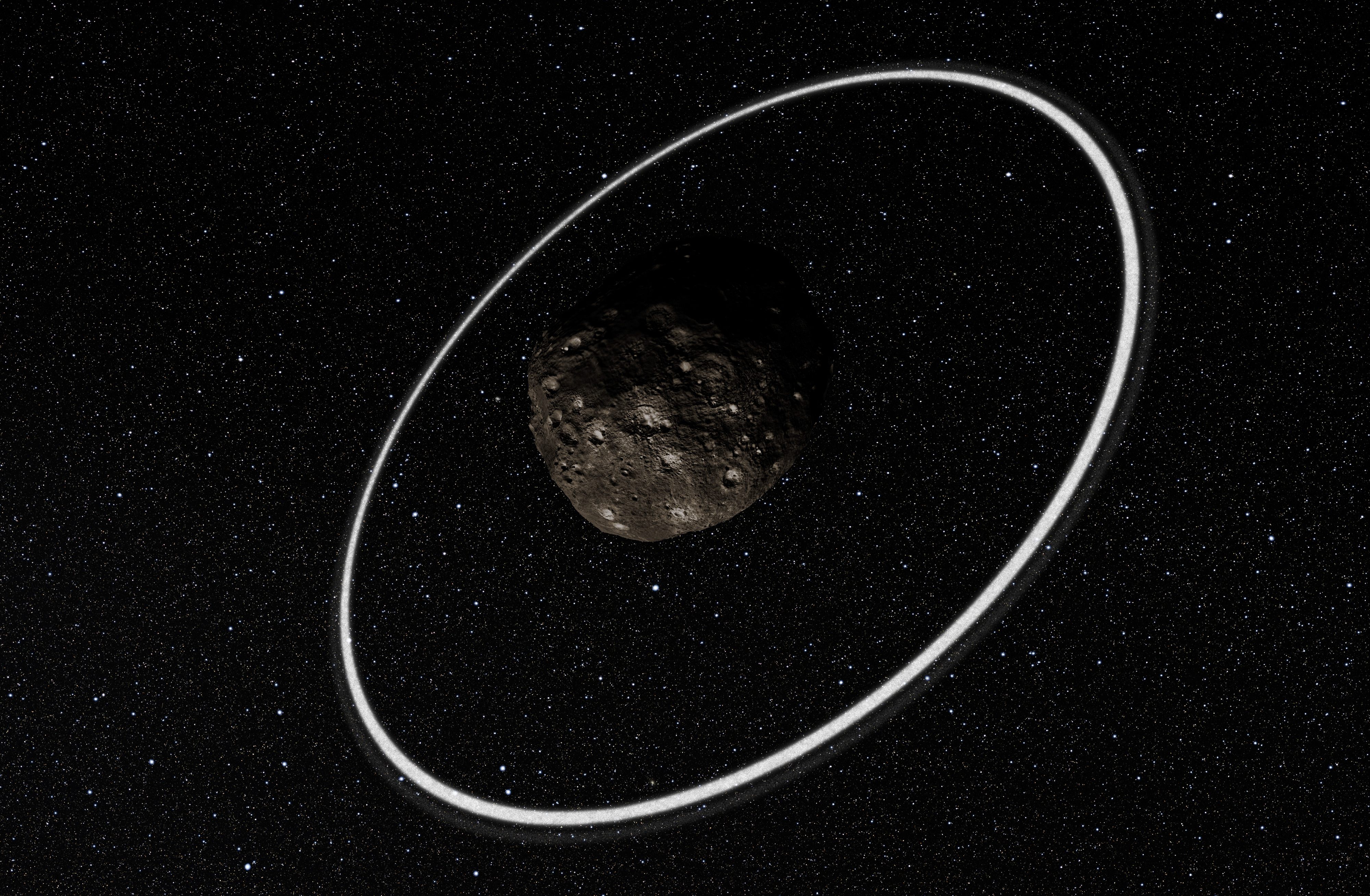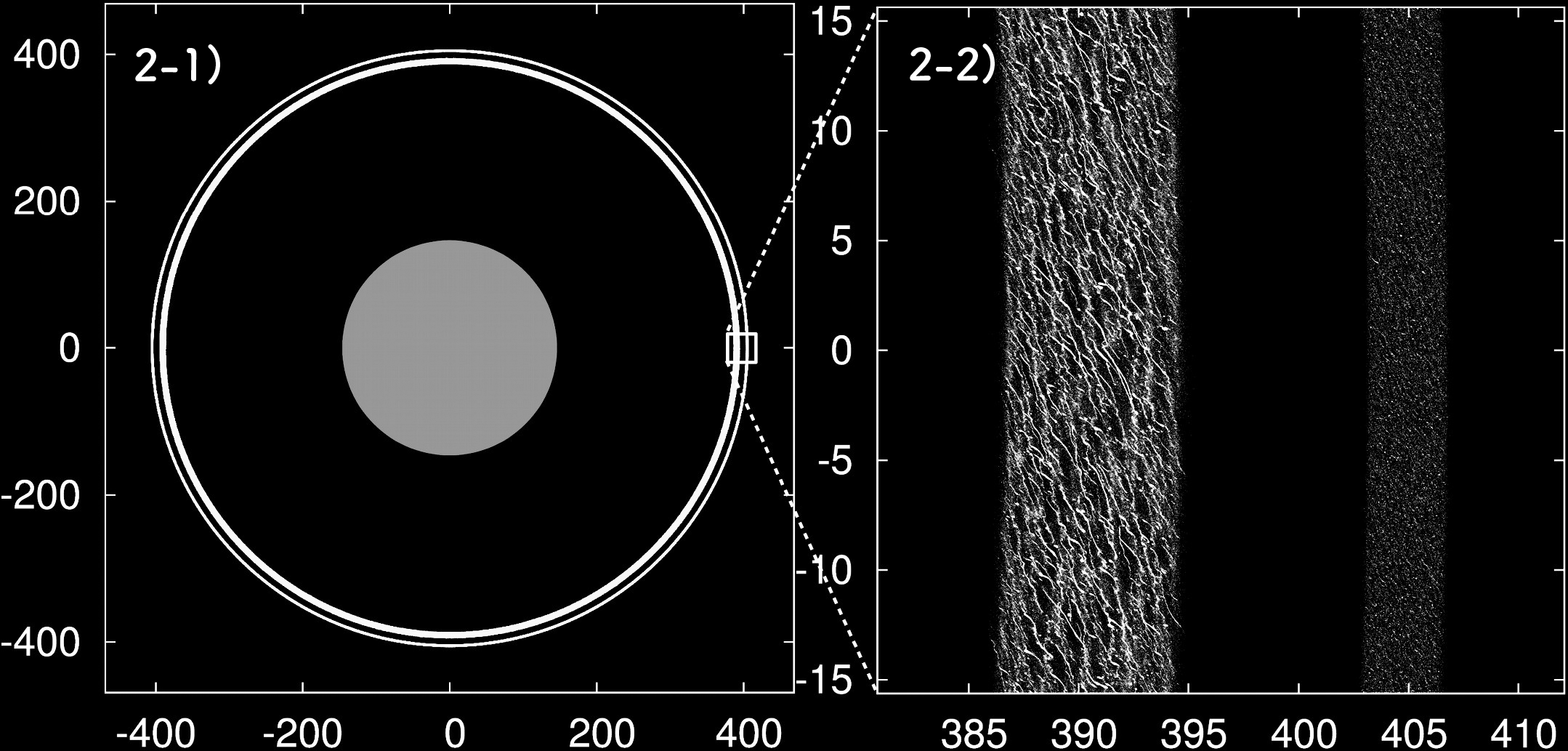The Largest Centaur in the Solar System Has Rings
That’s the minor planet, not the mythical creature.

The most famous rings in the solar system encircle Saturn, Uranus, and Jupiter, but they’re not the only planetary jewelry. Chariklo may be small by comparison—in cross-section it’s about the size of Sri Lanka—but the minor planet, known as a “centaur,” has two little rings of its own. Those rings also just so happen to be the perfect size for learning more about how ring systems form. A team of scientists from Japan has developed the first complete simulation of a ring system, and their model shows Chariklo’s rings may be short-lived.
Chariklo orbits the sun between Saturn and Uranus, and just like those of its neighbors, its opaque rings are made up of tiny chunks of ice and rocky debris. Modeling the complex interactions between particles in the huge rings around bigger planets is pretty much impossible. Though Chariklo’s small rings are more manageable from a computational point of view, they still require a supercomputer to simulate. With the model the scientists have created, they’re starting to understand how particles in rings—large or small—behave.

According to the model, the particles in Chariklo’s rings are interacting in a way that’s not sustainable, and ought to dissipate in around 100 years. So either we’re very lucky to be able to see them or there’s some other force keeping them together. It could be that the particles are very tiny, just a few millimeters across, which would allow the rings to stay together for millions of years, according to the simulation. “Another possibility is the existence of an undiscovered shepherd satellite which slows down the dissolution of the rings,” Eiichiro Kokubo, a theoretical astronomer at the National Astronomical Observatory of Japan, said in a press release. Understanding this effect will help make sense of how Saturn’s 62 moons—from Aegaeon to Ymir—impacts its rings.
Another use for these computer models? Soothing virtual flybys.









Follow us on Twitter to get the latest on the world's hidden wonders.
Like us on Facebook to get the latest on the world's hidden wonders.
Follow us on Twitter Like us on Facebook